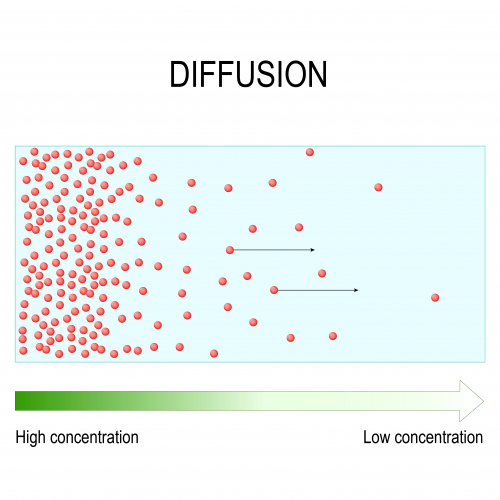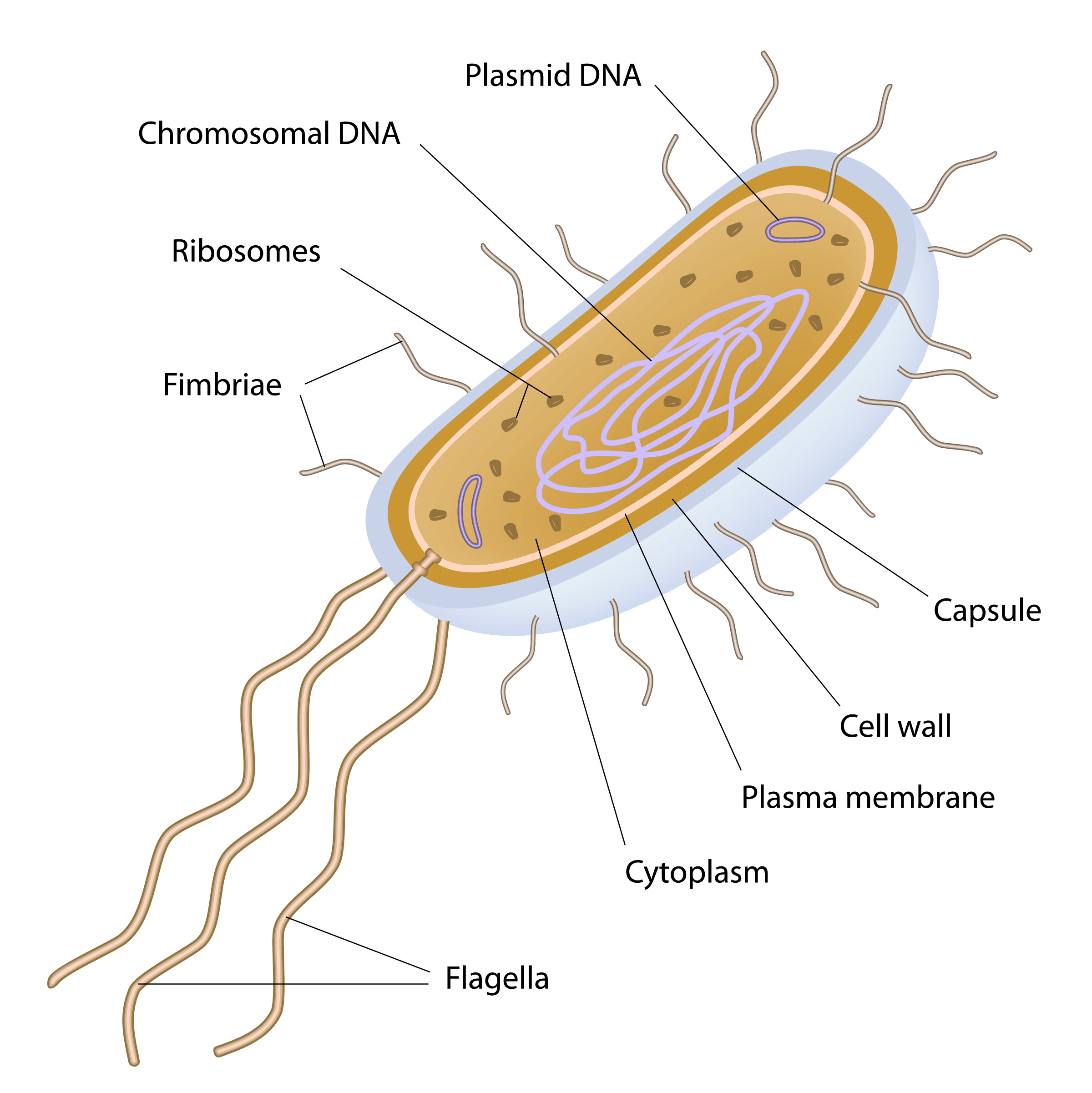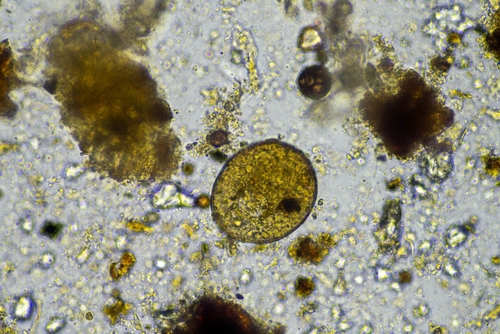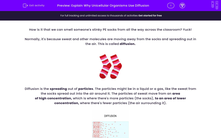How is it that we can smell someone's stinky PE socks from all the way across the classroom? Yuck!
Normally, it's because sweat and other molecules are moving away from the socks and spreading out in the air. This is called diffusion.
.jpg)
Diffusion is the spreading out of particles. The particles might be in a liquid or a gas, like the sweat from the socks spread out into the air around it. The particles of sweat move from an area of high concentration, which is where there's more particles (the socks), to an area of lower concentration, where there's fewer particles (the air surrounding it).

Living organisms need different substances to be able to survive and function. These substances need to be transported in and out of their cells through diffusion. During diffusion, particles move from an area of high concentration to an area of low concentration. We say they move down a concentration gradient. Particles diffuse until they are evenly spaced apart. Diffusion happens naturally and doesn't need energy, so we say it's a passive process.
Diffusion in organisms
Organisms usually use different organ systems to carry out the life processes - for example, humans have a digestive system to help with nutrition and a circulatory system to help with respiration. These organ systems are made up of groups of tissues and organs that work together.
However, not all organisms have organ systems or even tissues. Some are only made up of one cell. We call these unicellular organisms. These unicellular organisms can carry out the seven life processes, but only have one cell with which to do so.
In unicellular organisms such as the amoeba or bacteria, diffusion is how the organism gets its food and oxygen, and how it gets rid of waste products. As it's only made up of one cell, the particles of food or water, for example, don't have far to travel, so diffusion is the simplest way to enter the cell. They don't need complex transport systems and rely on the cell membrane, which is selective. This means it won't just let any random particle through - it can monitor which particle is allowed through it and also how many. Pretty clever, right?!
An example of a unicellular cell is bacteria - you can see what a typical bacterial cell looks like below:

Another example of a unicellular cell is the amoeba:

Amoebas have a large surface area in comparison to their volume - remember that they're made up of only one cell. That means it doesn't take long for gases such as oxygen to diffuse in and carbon dioxide to diffuse out. It has a short diffusion distance allowing the amoeba to exchange gases easily. This also helps the amoeba to get its nutrients through diffusion easily too.
In multicellular organisms, surfaces and organ systems are specialised for exchanging materials. This is to allow molecules to be transported in and out of cells for the organism’s needs. Diffusion is the main way that substances move over short distances in organisms.
In this activity, we will look at why unicellular organisms use the process of diffusion.
You can look back at this page at any point by clicking on the red help button on the screen.
.jpg)








